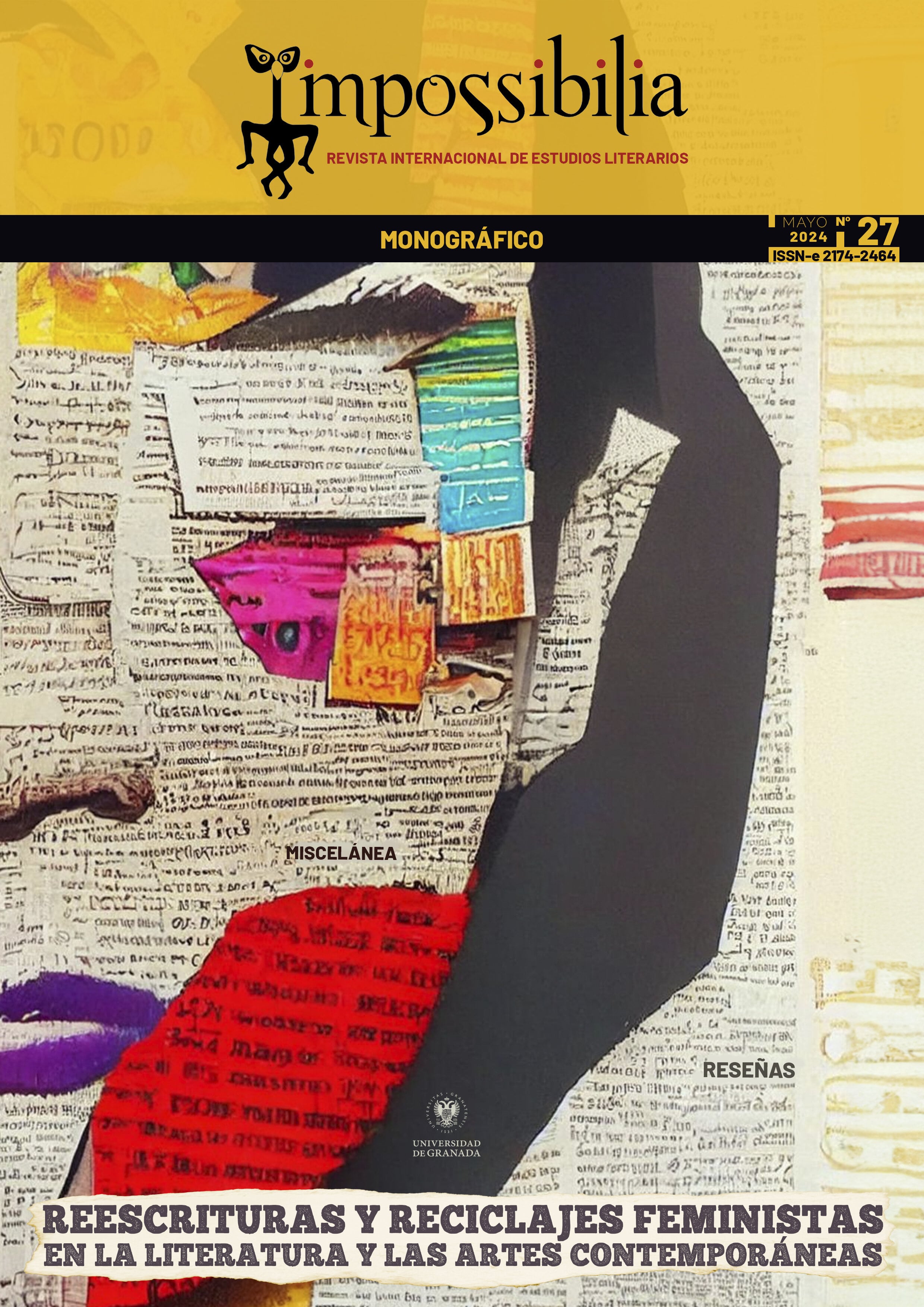Deconstruct or Reconstruct the Canon. Intertextual and Hypertextual Mechanisms in Feminist Rewritings
DOI:
https://doi.org/10.30827/impossibilia.272024.29754Keywords:
Feminism, Intertextuality, Hypertextuality, Rewritings, Subversion, Deconstruction, Reconstruction, Identity, Canon, EvolutionAbstract
This article seeks to display and typify different forms in which feminist rewritings may perform against the patriarchal canon, offering a theoretical perspective derived from intertextuality and hypertextuality. These two concepts will be reconstructed by subdividing them into two complementary mechanisms. Each of them operates according to a deconstructive or reconstructive purpose, depending on whether the revision of previous models or the genesis of novel discursive practices prevails. Intertextuality will be understood as punctual and extensive relations, making a distinction between explicit (transductions) and implicit (transpositions) transformations. Hypertextuality, as intensive relations that generate a structural retro-affectation in the hypotext, distinguishing between weak/retrospective (oppositions) and strong/retroactive (synthesis). The methodology and concepts proposed will be applied upon certain feminist texts, including deconstructive revisions of Neruda’s verses and rewritings of Dulcinea and Little Red Riding Hood.
Downloads
References
BAÑOS SALDAÑA, José Ángel (2022). La dinamicidad de los textos literarios. Hacia una tipología de la transreferencialidad. Signa, (31), 271-292.
CARTER, Angela (2014). La cámara sangrienta. Madrid: Sexto Piso.
CRESPO, Andrea Sofía (2021). Ayes del destierro. Córdoba: Libero Editorial.
GENETTE, Gérard (1989). Palimpsestos: la literatura en segundo grado. Madrid: Taurus.
LAURETIS, Teresa de (1984). Alicia ya no. Feminismo, semiótica y cine. Madrid: Cátedra.
MARTÍN ROJO, Luisa (1998). Strategies of resistance to normative discourse: The emergence of a new female identity. En BENGOECHEA, Mercedes; & SOLÁ, Ricardo (eds.), Intertextuality (81–98). Alcalá de Henares: UAH.
MUÑIZ-HUBERMAN, Angelina (2005). Dulcinea encantada. Alicante: Biblioteca Virtual Miguel de Cervantes. Disponible en: https://www.cervantesvirtual.com/obra-visor/dulcinea-encantada--0/html/0031342a-82b2-11df-acc7-002185ce6064_2.html
PAVLIČIĆ, Pavao. (2006) La intertextualidad moderna y posmoderna. Versión, (18), 87-113.
PAZ PASAMAR, Pilar (2017). Aldonza se casa. Revista Hispano Americana, (7), 179-181.
PÉREZ LÓPEZ, María Ángeles (2019). Interferencias. Madrid: La Bella Varsovia.
PIÑÓN, Nélida. (2015) La camisa del marido. Barcelona: Penguin Random House.
POZUELO YVANCOS, José María (2019). Interdiscursividad: cine y literatura en Javier Cercas. En Sagrario López Poza, Nieves Pena Sueiro, Mariano de la Campa, Isabel Pérez Cuenca, Susan Byrne y Almudena Vidorreta (eds.), Docta y sabia Atenea (671-682). A Coruña: UDC.
REYES, Graciela (1984). Polifonía textual. La citación en el relato literario. Madrid: Gredos.
SAMOYAULT, Tiphaine (2008). A intertextualidade. São Paulo: Aderaldo & Rothschild.
TOPIA, André (1976). Contrepoints joyciens. Poétique, (27), 351-371.
UGALDE, Sharon (1990). Erotismo y revisionismo en la poesía de Ana Rossetti. Siglo XX, 7(1), 24-29.
VALENZUELA, Luisa (2003). Cuentos completos y uno más. México: Alfaguara.
Published
How to Cite
Issue
Section
License
Copyright (c) 2024 Impossibilia. Revista Internacional de Estudios Literarios

This work is licensed under a Creative Commons Attribution-NonCommercial-NoDerivatives 4.0 International License.
















